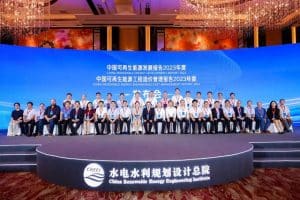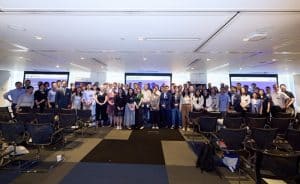B corporations emerged in 2011. They have since become an innovative trend influencing businesses around the world. The “B” stands for benefits, with the corporations aiming to benefit all stakeholders in the market system. The idea was first initiated by two American entrepreneurs in 2006.
B Corp as a certification is analogous to the Leadership in Energy and Environmental Design (LEED) certification for environmentally-friendly buildings, or the Fairtrade Certification for coffee or chocolate. However, in the context of China, B Corp can also be seen as one of the effective solutions to end the cycle of involution at domestic companies
Involution: the paradox of competition
Involution (nei juan) has become a buzzword in recent years. It refers to the lack of balance between the limited distribution of resources and a growing population. Evidence for involution includes meaningless competition in the job market, higher education, and entertainment.
In the job market, the so-called “cycle of involution” is characterized by a situation in which employers’ time and energy are exploited by the employees, whereas in the context of education, involution refers to the excessive competition between students for limited educational resources.
The competition is meaningless in that it does not produce any intellectual, psychological, or career development for the individual, though it is conducive to overall GDP growth. The notorious “996” work shift (working from 9 am to 9 pm six days a week) phenomenon is one of the malign results of involution. Facing fierce competition, individual choice is limited to engaging in the involution or exiting the pool of involution, which is sometimes referred to as “lying-flat” (tang ping).
At the individual level, involution is a huge threat to mental health. Numerous cases of depression, anxiety, and even suicidal thoughts have resulted from the failure and helplessness induced by the intense competition. The massive destruction of self-esteem leads to paradoxical phenomena in society, with competition seeming to boost overall economic growth. On the one hand, measures such as GDP and CPI record explosive growth. But on the other, the cycle of competition is negative for an individual, as the quantitative scale of happiness level and the human development index tend to either plateaue or reduce significantly.
With the limited resources allocated, individuals will easily fall into the trap of either lying flat and exiting the competition, or engaging in the competition while feeding on the cycle of involution.
In this sense, involution could be broken up by either increasing the shared proportion of welfare that each individual can possess, or creating more employment opportunities by expanding the economic cake. Social innovation could be one of the solutions for ending the cycle of involution.
B corporations: business as a force for good
From the perspective of seeing business as a force for good, instead of catering to the overly heated competition in the market, B Corp seeks to establish cooperation between each stakeholder within the corporation as well as with the environment and society outside.
The three basic requirements for a corporation to become B Corp are: verified social and environmental performance, legal accountability, and public transparency. Those three requirements are considered a rebellion against the traditional maximization of shareholder value. Recognizing the common indifference to social issues in corporations, B Corp represents a paradigm shift to concern for all stakeholders.
B corporations will utilize the B Impact Assessment to estimate the overall impact of the corporation on governance, workers, community, customers, and the environment for the three requirements. By devising a specific impact assessment system, B Corp ensures that both the corporation and stakeholders get their fair share to establish a healthy business environment.
According to the B impact assessment, governance is to estimate the overall mission, engagement around the social or environmental impact, ethics, and transparency in the corporation, which is to ensure the commitment of the corporation to its goals and its ability to ensure the welfare of all stakeholders.
On the other hand, workers, community, and the environment represent the corporation’s contributions to its employees’ financial security, corporate engagement, environmental management, and commitment to customers in terms of product quality control and ethics in the marketing process.
Jinglian Wu, founder of the Leping Foundation pointed out that, “a B Impact Assessment makes it more practical for companies to pay more attention to stakeholders. Not only can they accommodate cultural and regional differences, but also, together with global capital market reforms and consumer movements such as impact investing and fair trade, they can effectively promote the development of the global economy to the stakeholder economy.”
In a nutshell, B corporations take the social responsibility of building up a balance between employees and employers, as well as the environment, communities, upstream and downstream suppliers, consumers, and so on. As a member of a B Corp, workers’ rights are respected, their social value is recognized, and corporate financial sustainability is emphasized.
Why China needs B Corp: breaking the boundary of involution
In the context of involution, being a B Corp involves more than simply receiving a certification. The structural recognition of B Corp involves support, protection, and a transformation to stakeholders.
When it comes to support, B corporations stand on the side of workers. Every worker will be given B Corp’s Manual of Human Rights and Labor Policy, which states that workers have the right to negotiate, form unions, and enjoy the freedom to choose their jobs.
In terms of protection, legal accountability ensures that every stakeholder has their legal rights. It means that the executives in the corporation have to consider the influence of their decisions on the stakeholders, community, and environment. That is to say, if the personal or public interests are infringed, every party has the right to object.
In this sense, the support and protection from B corp gives employees the legal right to object to “996”. B Corp specifies the average salary and working hours as a default standard in the corporation.
Representing a transformation, B Corp also considers shifting financial value to a society’s human development and happiness index. Following the service-dominant logic, B Corp’s concept of value is related to satisfaction and emotional fulfillment. Yet, the value attached to the service is evaluated by emotional reaction, rather than the sheer monetary value.
The underscored economic value embedded within involution is deemphasized in the value estimation in B Corp. The value of each party is considered in terms of its achievements, rather than using a linear method of evaluation to judge individual work performance.
In 2013, the Law of B Corp listed the principles of corporations as creating a positive impact on society, expanding directors, considering non-financial interests, as well as using third-party standards to report their social and environmental performance. The principles also include fiduciary responsibilities – commitments to act in the best interest of each party. Law is the most effective constraint used by shareholders, and it is also the ultimate resort of employees.
As the co-author of The B Corp Handbook, Tiffany Jana said, “Companies that thrive on the exploitation of people should not thrive. We can create an economy where inclusion and accountability are rewarded. The realization of these ideas should not depend solely on government regulation. They can be achieved through the leadership and stewardship of the business community if we choose to take action.”
The intrinsic mechanism of support, protection, and transformation is the medicine to cure the disease of involution. Employees should not be seen as tools that serve financial interests. They deserve dignity and respect from their employers. Economic development is not equal to human development; the quantitative growth of the employer as a human being is equally important to the growth of the economy.
Conclusion: the future of B Generation
Popularizing B corporations is not a far-fetched dream. BottleDream, established in 2011, has strived to become the producer as well as the coordinator of social innovation in China. Having reported over 1000 stories of facilitators of social innovation to 180 million readers around the world, BottleDream aims to use business as a force for good — to encourage the younger generations to join in social innovation to make a change.
As the fifth B corporation in China, BottleDream represents the voice of the B generation as the voice of the young generation.
In 2018, an internet-based service platform of Chinese social innovation was initiated. The platform purported to connect innovators and practitioners that were concerned about social issues and who wanted to take social responsibility. It took the clarion call to assemble future explorers around the world to build the B Generation.
The intrinsic innovative force of B corporation can lead to a revolutionary change in the status quo of involution. Consider this, if the quantitative growth of the economy can be accompanied by the B economy which consists of millions of companies using business as a force of good, then consumers, workers, and corporation managers can succeed in a sustainable future with mutual support. Although there’s a long way to go, B corporation has the potential to break the vicious cycle of competition, and the responsibility, if heavy, is on the shoulders of the young generation.
References:
http://www.lepingfoundation.org/knowledge/
Honeyman, Ryan & Jana, Tiffany. The B Corp Handbook: How You Can Use Business as a Force of Good. 2nd ed., Berrett-Koehler Publishers, 2019
Dong Shusheng et.al., editors. Stanford Social Innovation Review. CITIC Press, 2019



